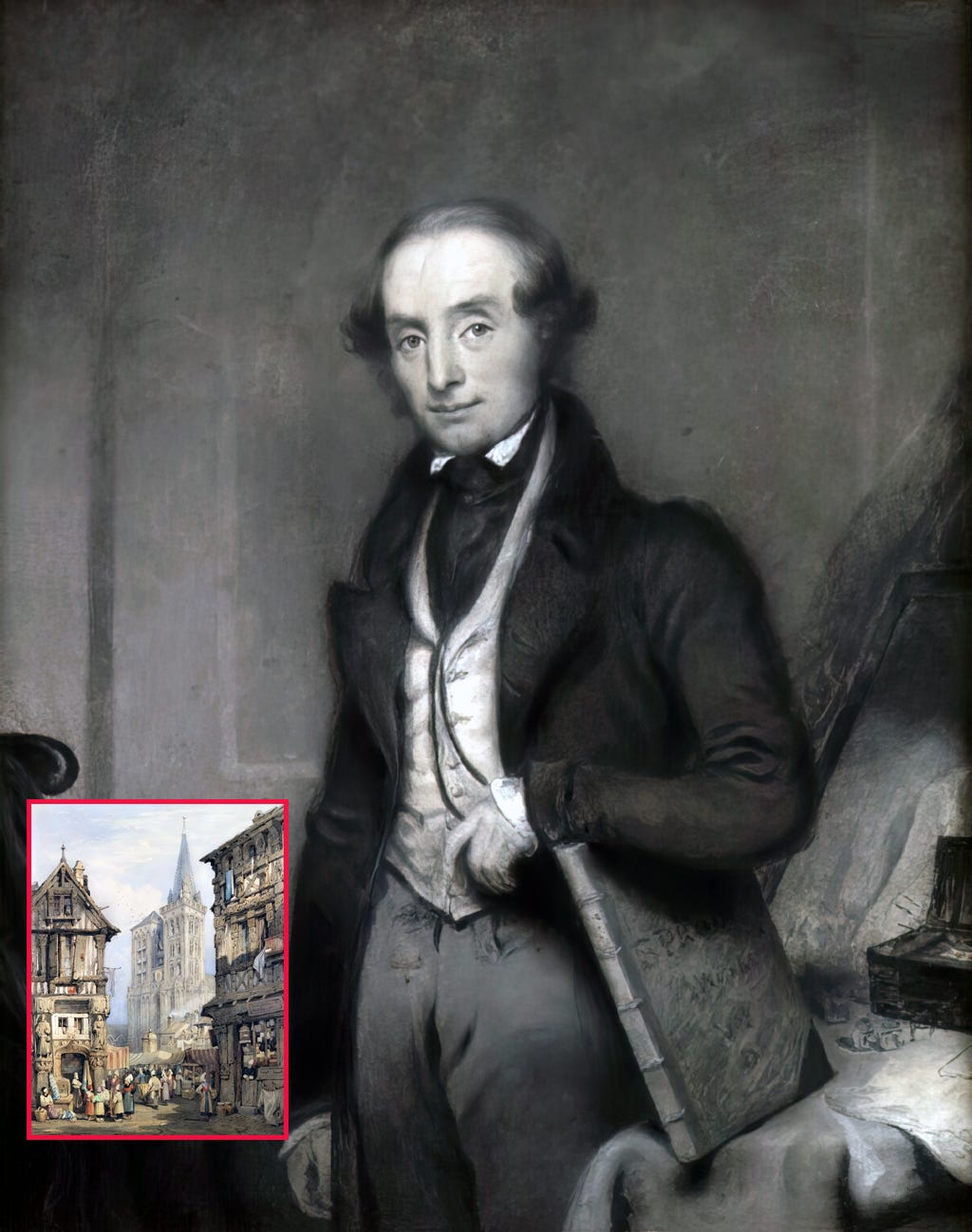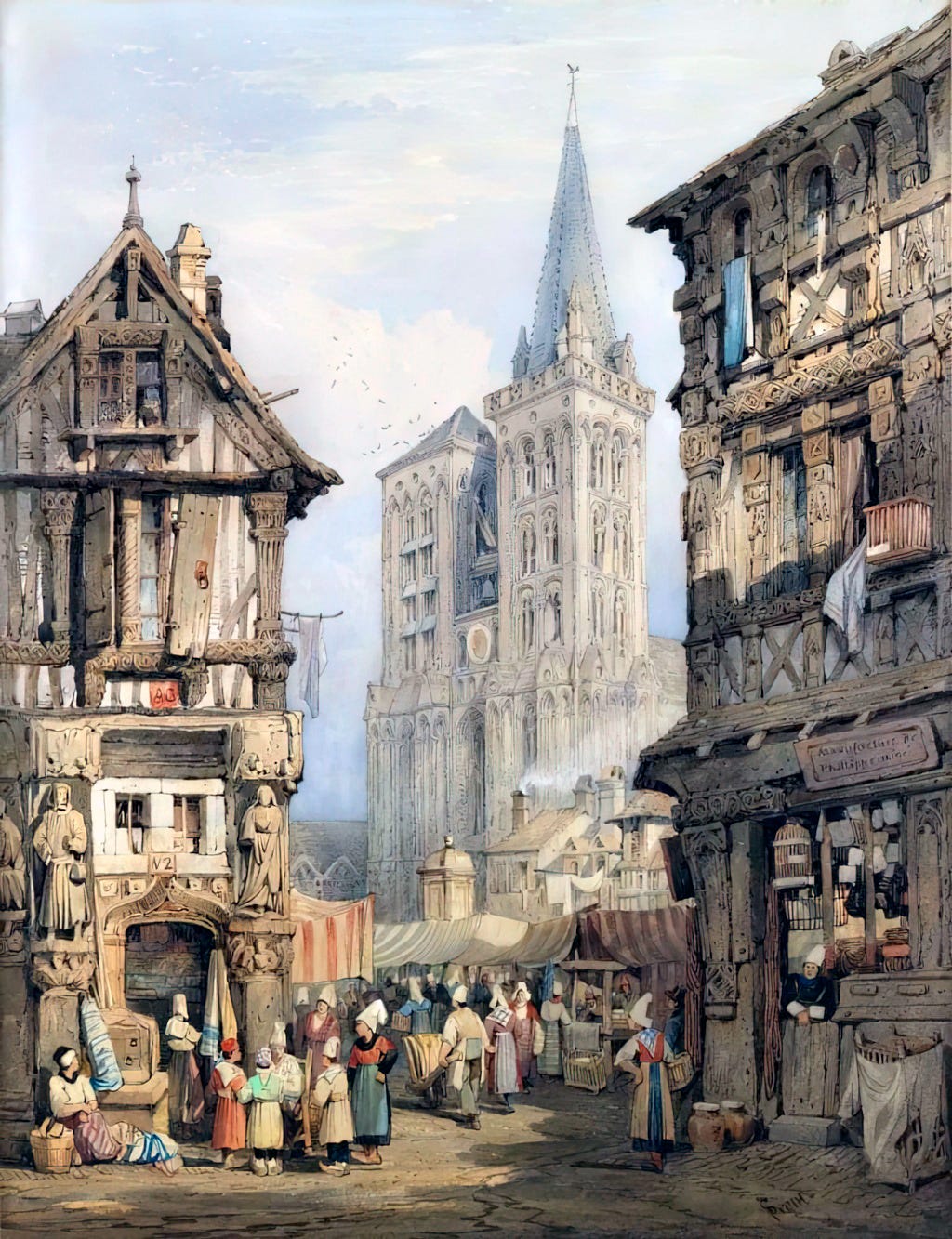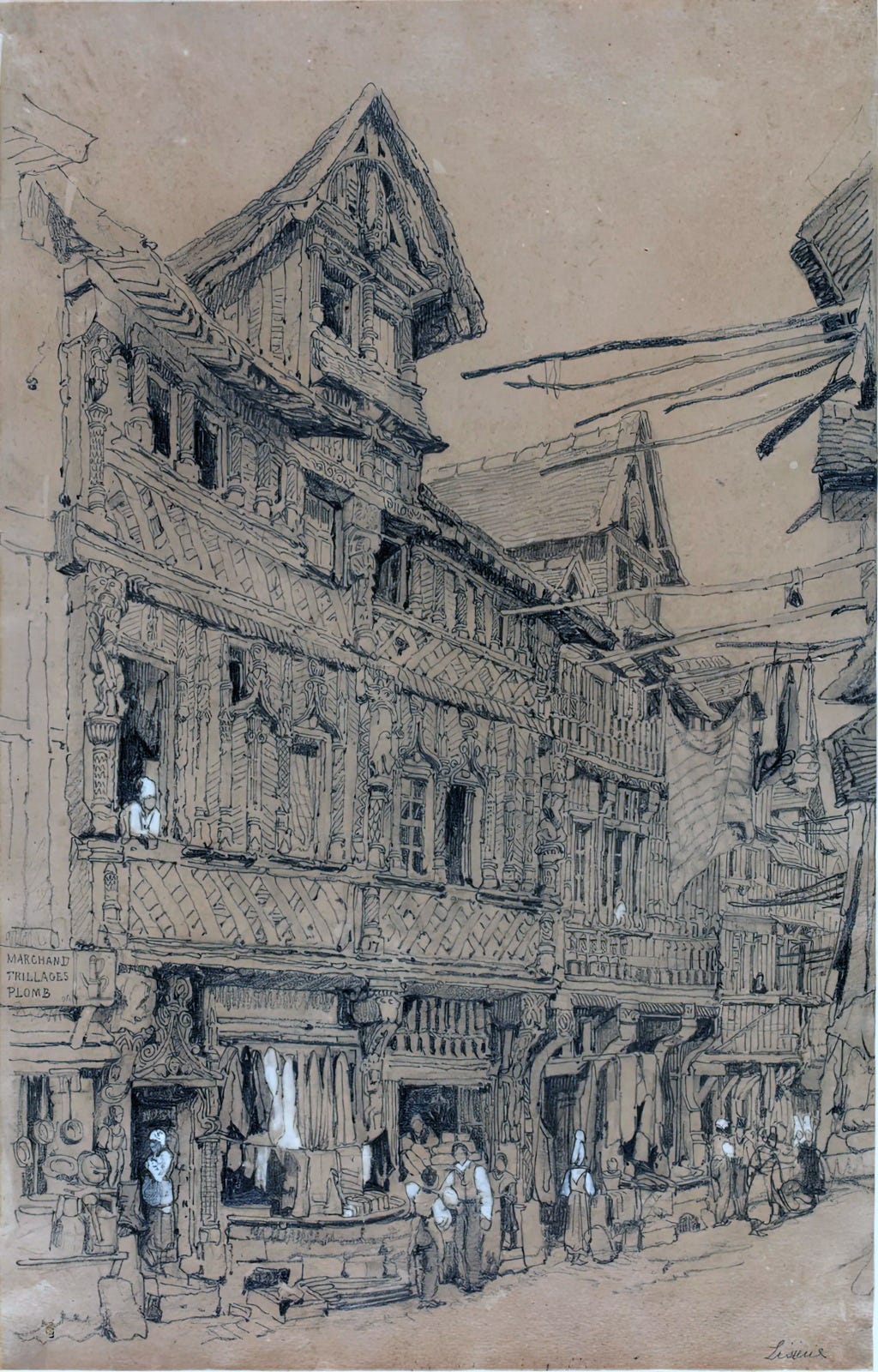Samuel Prout was an English watercolourist born in 1783 in Plymouth and died in 1852 in London. He is particularly known for his architectural paintings, especially scenes of Continental Europe that feature Gothic buildings, old streets, and picturesque ruins. His detailed and atmospheric depictions of urban architecture earned him a strong reputation during the 19th century, particularly for capturing the textures of age—such as weathered stone, moss, and crumbling plaster—with remarkable sensitivity.
Prout became one of the leading figures in the development of the picturesque tradition in English watercolour painting. He was appointed Painter in Water-Colours in Ordinary to King George IV and later to Queen Victoria, a recognition of his skill and the popularity of his work among the elite of the time.
He traveled extensively across Europe, including to France, Germany, Belgium, and Italy, and these travels deeply influenced his art. His most celebrated works are street scenes and architectural studies from cities like Venice, Rouen, and Prague, which he rendered with a sense of historic melancholy and romantic decay.
Samuel Prout was also an important figure in the development of lithography in England. His instructional books and lithographic prints helped spread interest in architectural subjects and watercolor techniques. Notably, he was admired by contemporaries such as John Ruskin, who praised him for capturing the nobility and dignity of ancient buildings.
He taught art and had a successful studio, and his legacy continued through his nephew, John Skinner Prout, who also became a respected painter.
These were the only two paintings he made in Lisieux, Normandy that we were able to find.






